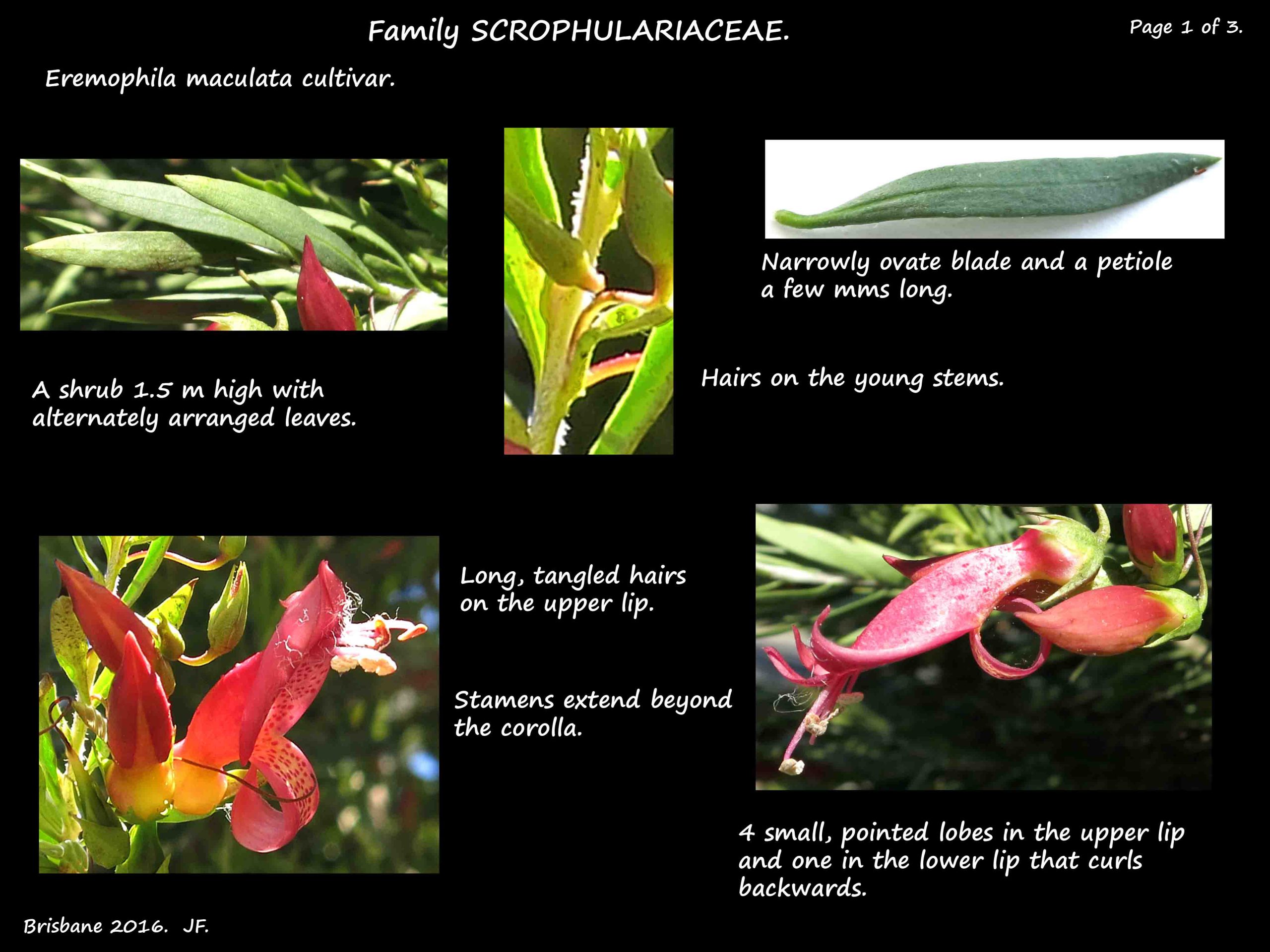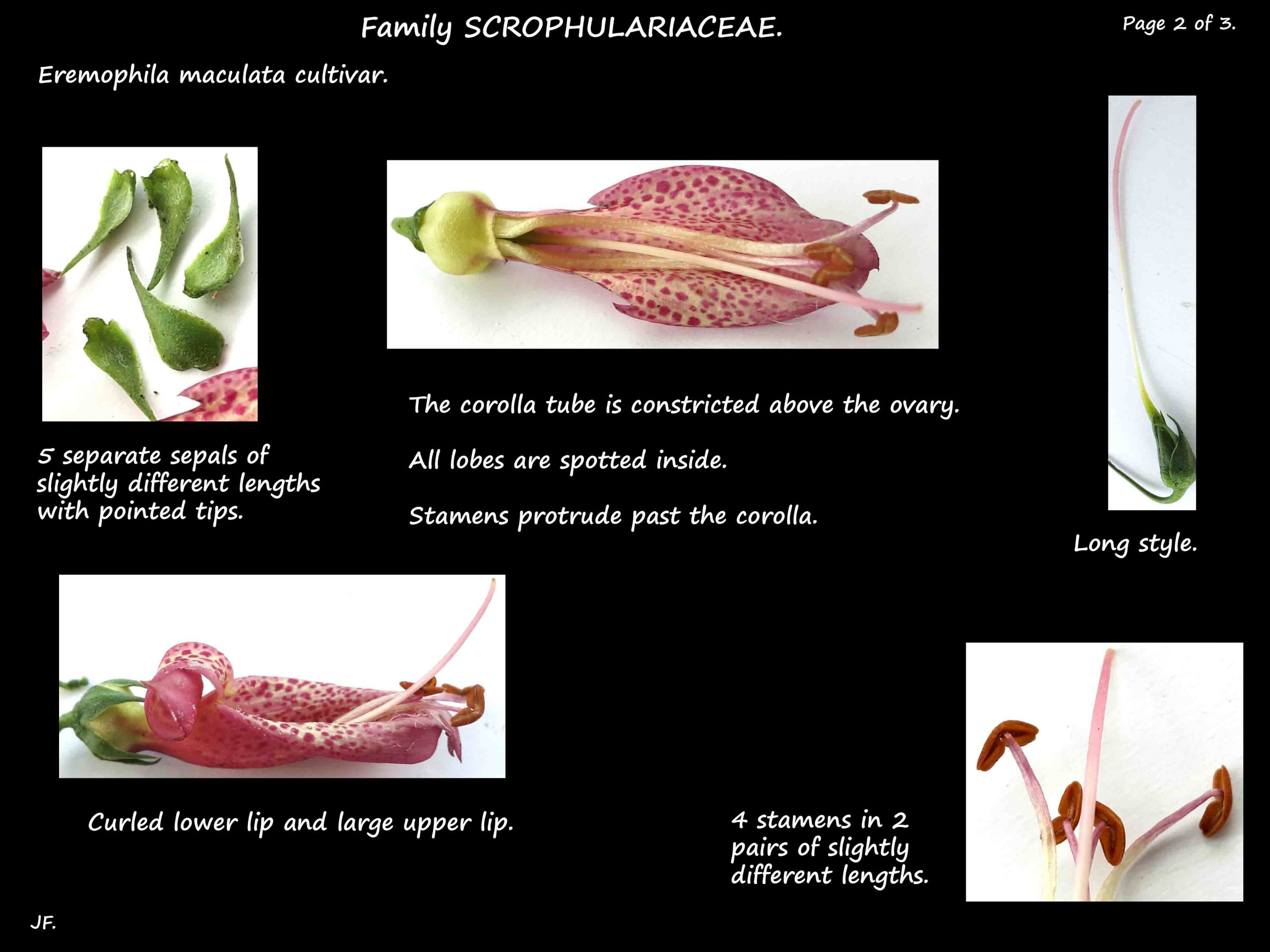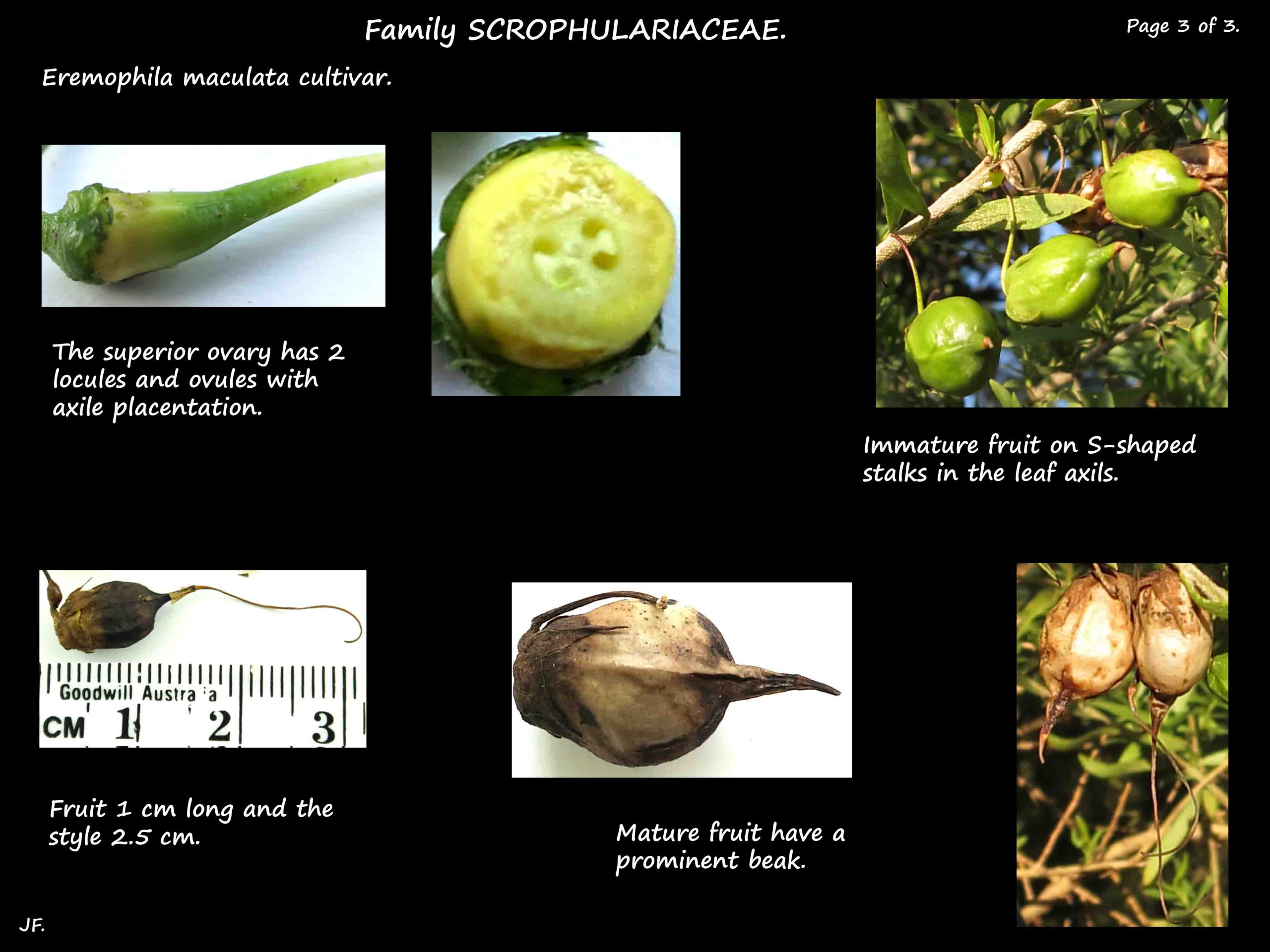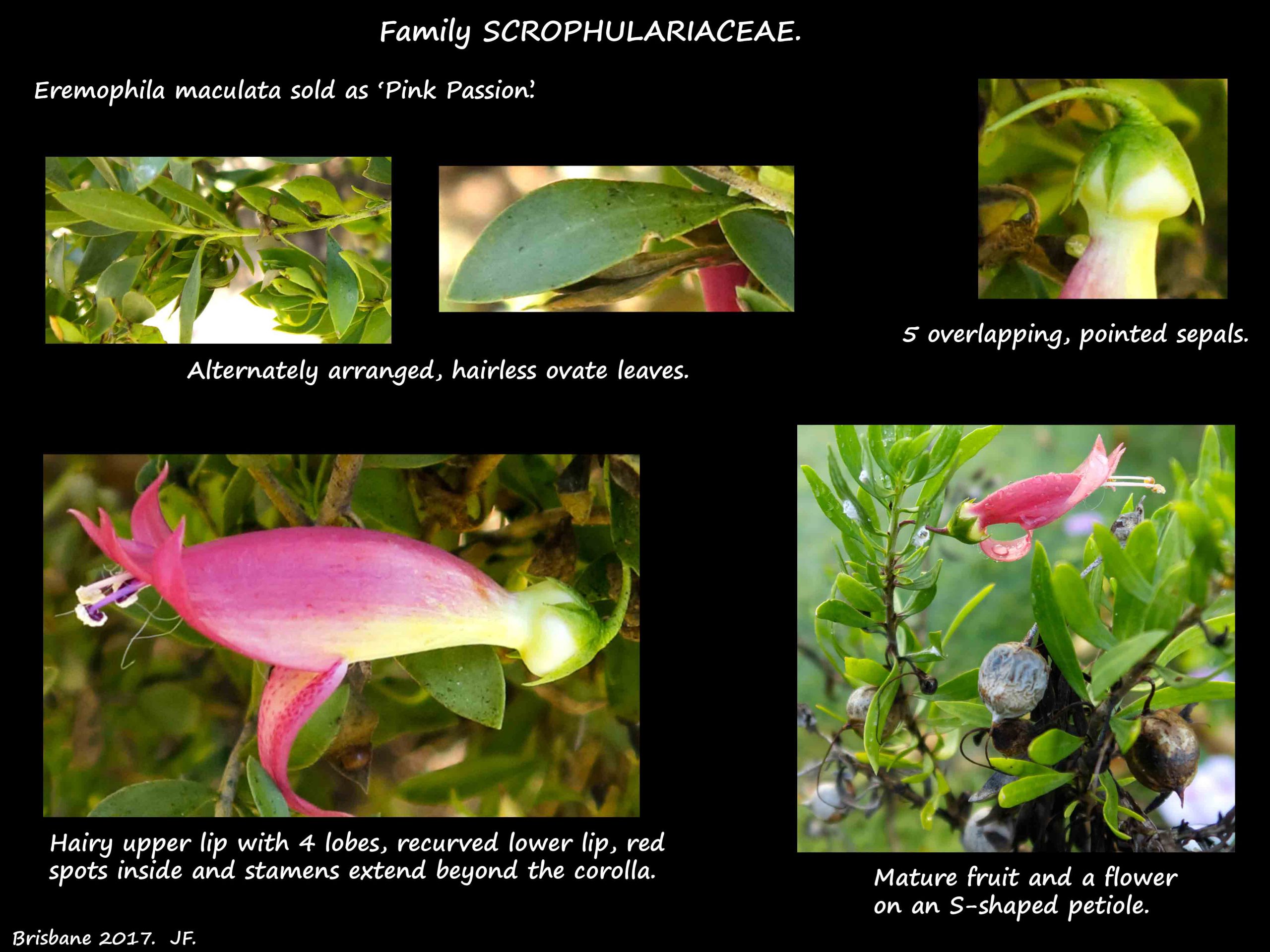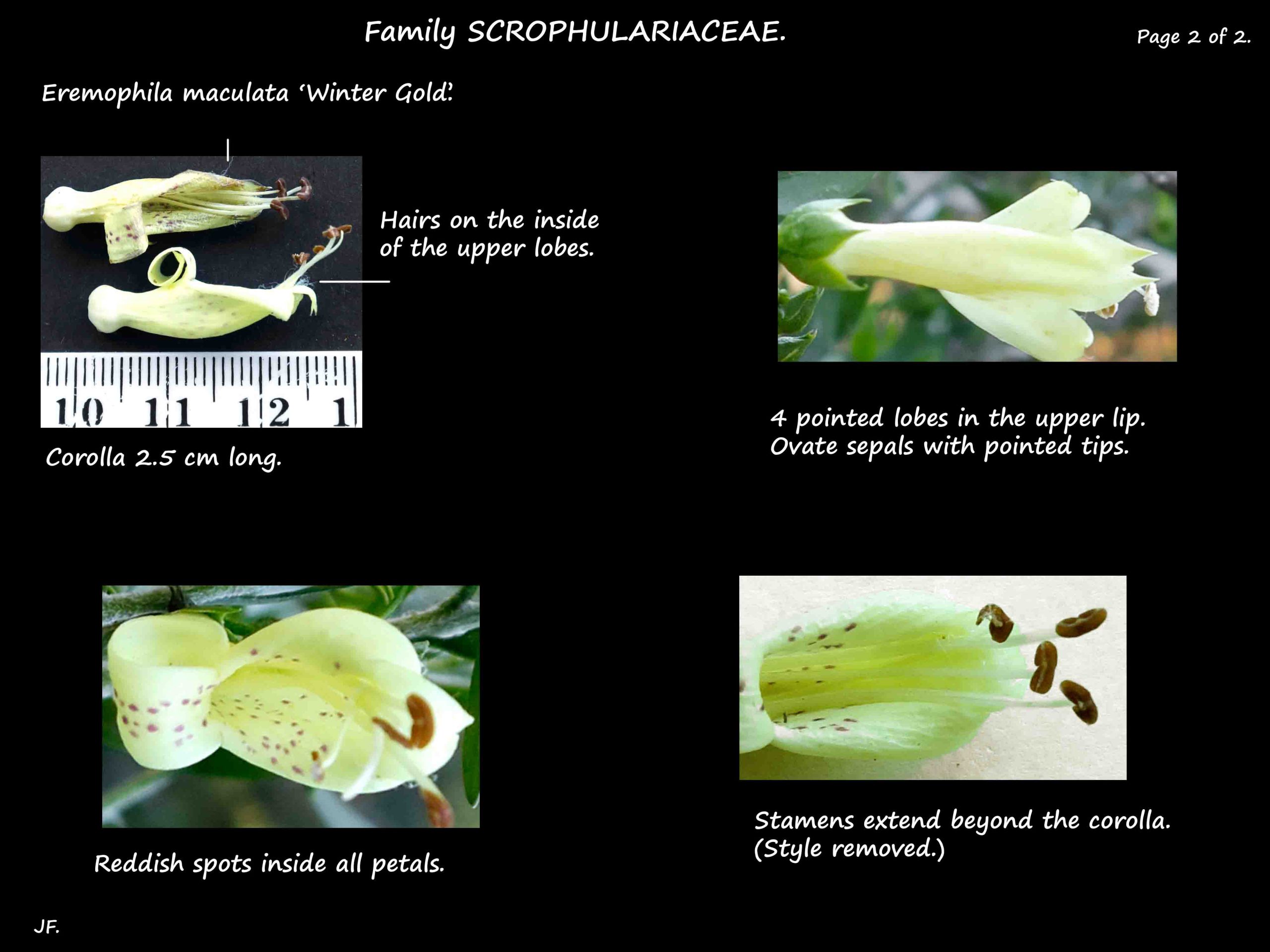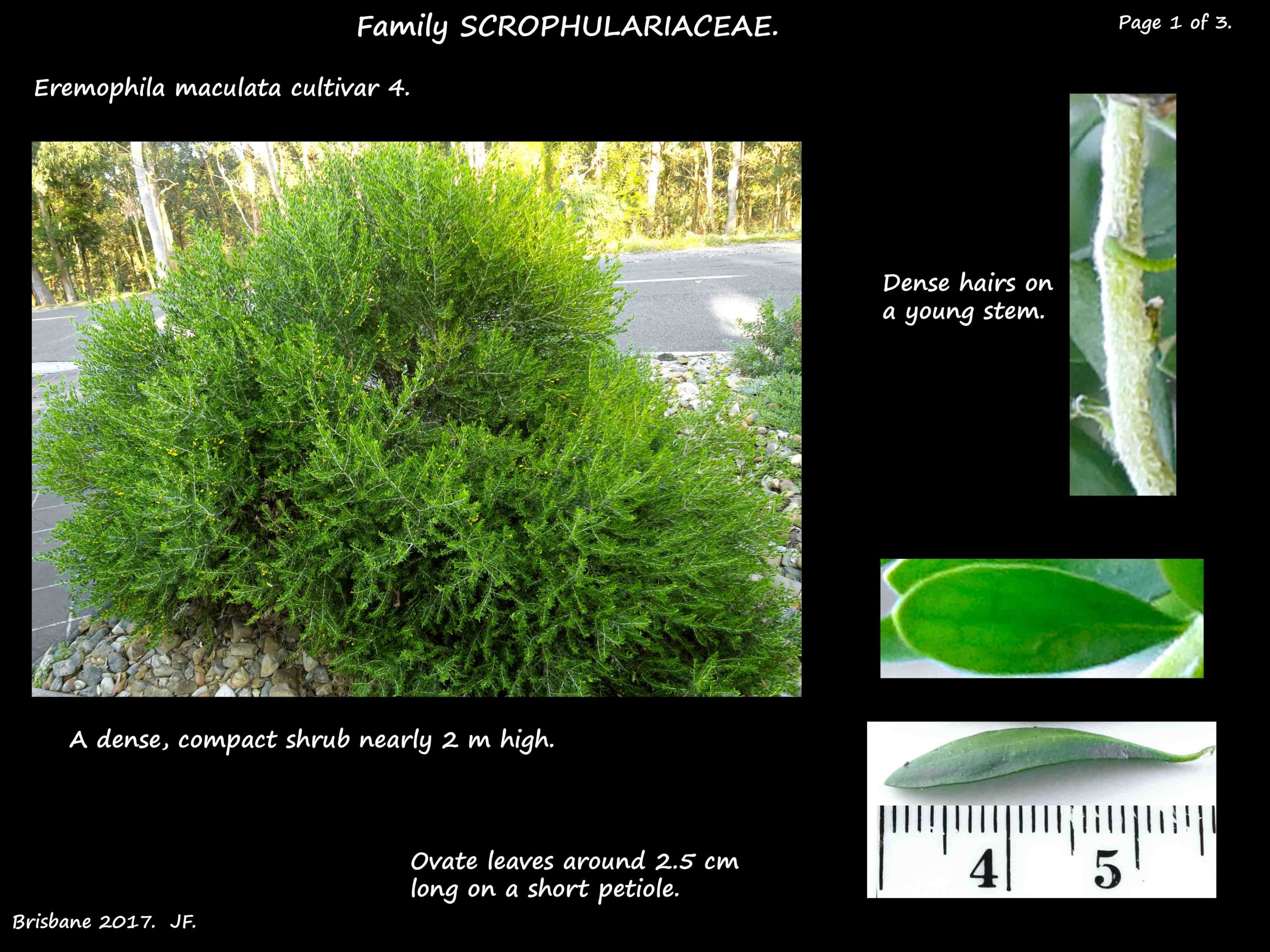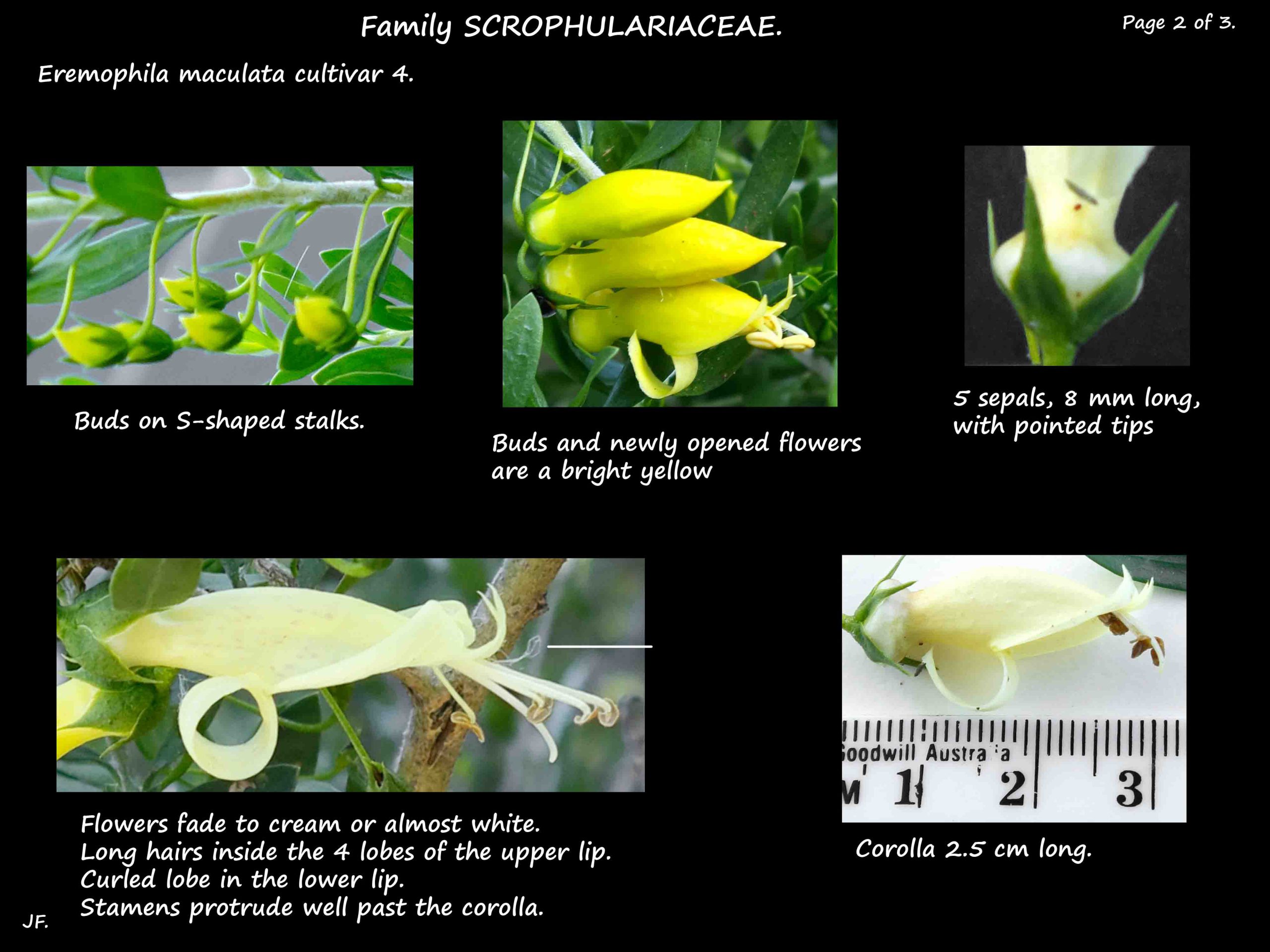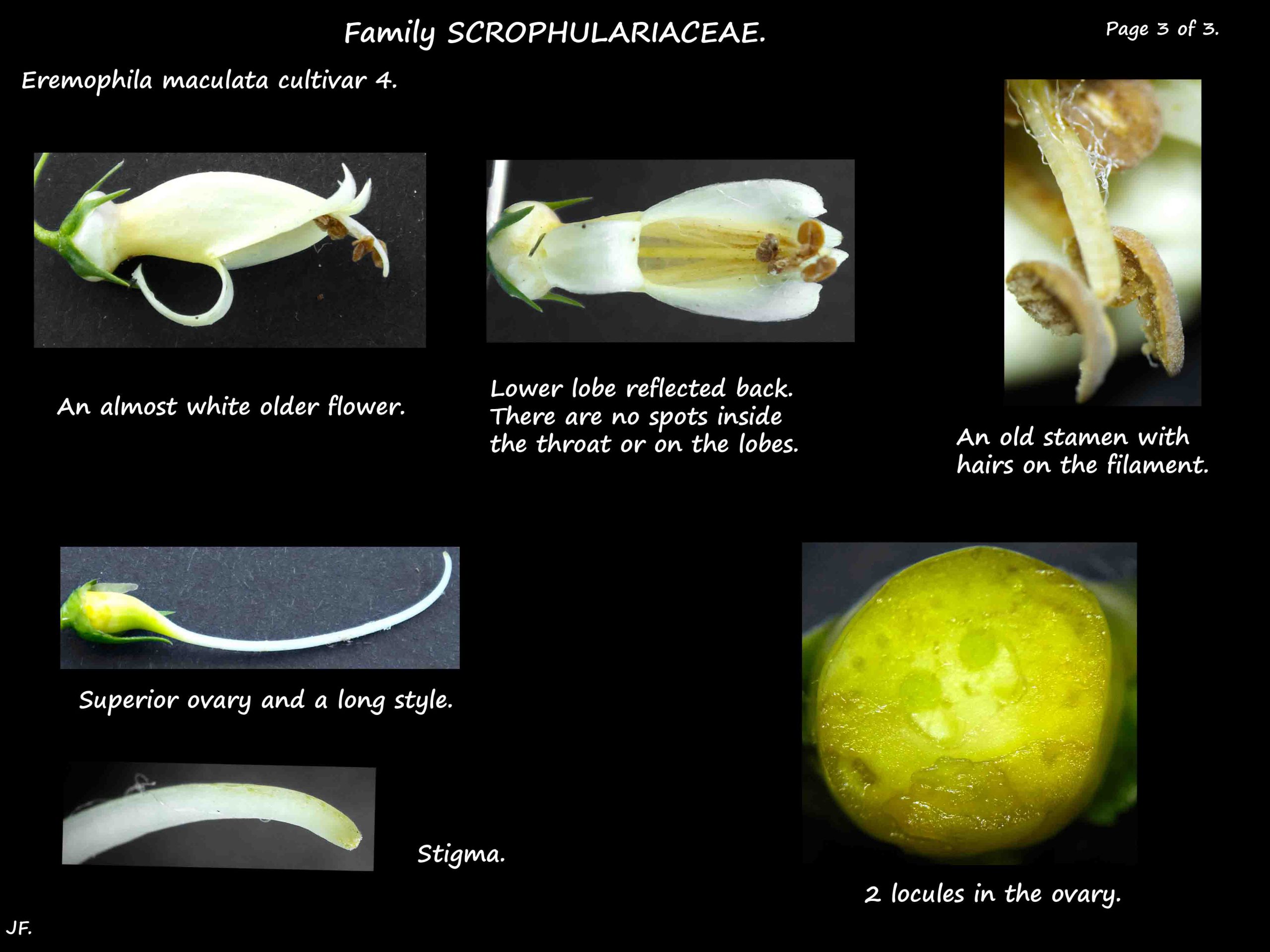Eremophila maculata.
Family Scrophulariaceae.
An Australian native, occurring in Queensland, it is known as the Spotted Emu or Spotted Fuchsia bush.
An evergreen, compact but irregularly shaped shrub 1 to 2 m high.
The small branches may have hairs.
The alternately arranged, bright green leaves, on petioles to 6 mm long, are variably shaped.
They can be narrowly ovate to elliptic, 15 to 35 (10 – 50) mm long and under 20 mm wide.
The edges are smooth and the surface smooth although young leaves may have glandular hairs.
Axillary inflorescences are single, tubular flowers that are very variable in colour.
They can be pink, red, yellow, orange or mauve and often have spots inside.
The S-shaped stalks, up to 2.5 cm long, have no hairs.
The 5 green sepals are around 6 mm long with pointed tips and may have a purplish tint.
The 5 petals are fused for about half their length.
The tube, around 3 cm long, is constricted above the ovary.
The flowers are typical of Eremophilas pollinated by birds such as honeyeaters.
The upper lip has 4 small lobes with pointed tips that curve backwards.
The lower lip has one larger curled lobe and the 4 stamens extend beyond the tube.
The outside of the corolla is smooth as is the lower lip inside.
The inside of the upper lip often has long hairs.
The dry fruit have a prominent beak.
There are 3 subspecies:
E. maculata subsp. maculata has roughly linear leaves over 2 mm wide.
E. maculata subsp. filifolia has leaves under 2 mm wide.
In E. macualta subsp. brevifolia the leaves are ovate to almost circular.
Commonly cultivated, Eremophila maculata and its cultivars are sold under names such as ‘Pink Passion’,
‘Aurea’, ‘Crimson Star’ and ‘Carmine Star’.
Eremophila ‘Winter Gold’ is seen used for cultivars of both E. maculata and occasionally E. glabra.
J.F.
